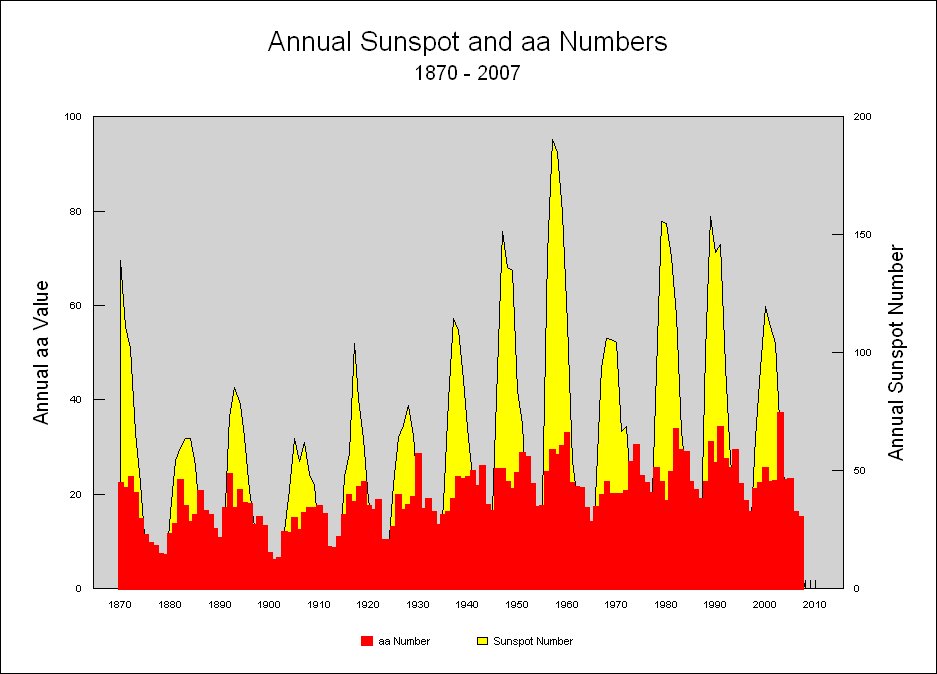Astronomical cycles
Posted on 17 June 2010 by Riccardo
Guest post by Riccardo
Recently a new paper by Scafetta came out (a freely downloadable version can be found on arxiv but I don't know if they are exactly the same). In a few words, Scafetta connect the orbital motion of the planets with solar variability and hence on earth climate. He found a dominant 60 years cycle which, he claims, greatly downplay the anthropogenic contribution to the warming after the '70s. I won't go through the details of his analysis and the hypothesis on the yet to be discovered physical mechanism behind. Forget about physics for a moment, as Scafetta does, and think only about cycles and periods.
He does a nice and fascinating analysis of various orbital cycles which cause the motion of the sun around the center of mass of the solar system. It's assumed that in one way or another the gravitational pull affect sun activity. He then compares the power spectra from detrended Hadley's temperature data with that of the orbital cycles and obtains the nice graph reproduced below.

Fig.1: reproduction of fig. 10B in the original paper. It shows the eight years moving average of the temperature anomaly detrended of its quadratic fit (gray); the thin black line is the same curve shifted by 61.5 years.
The data has been detrended assuming an underlying parabolic trend. The main 60 year cycle, due to the alignment of Jupiter and Saturn, shows up very clear, but there are more. In particular, he identifies a total of 10 cycles due to combination of planets motion and one due to the moon (fig. 6B in the paper). Of those cycles, only two more are considered significant, namely those with periods of 20 and 30 years.
Fascinating. But then, a few pages later, Scafetta writes:
However, the meaning of the quadratic fit forecast should not be mistaken: indeed, alternative fitting functions can be adopted, they would equally well fit the data from 1850 to 2009 but may diverge during the 21st century.
His warning is on the problem of extrapolation of the trend in the future, which he nonetheless shows. But this sentence made me think that it's true, once we put physics aside, we're free to use the trend we like; so why parabolic? I decided to take a closer look, and this turns out to be the begining of the end.
The first and more obvious try is a linear trend and then one with a higher power. I kept the functional form y=a(x-1850)n-b used by Scafetta, but let n be 1,2 or 4. Here's what I got.

Fig.2: HadCRUT3 monthly data (grey) and the fits for n=1 (red), 2 (green) and 4 (blue).
Already by eye inspection it may be noticed that, due to the different curvature of the fitting functions, the behaviour is different between the middle and the extremes of the range. To be quantitative, we need to calculate the residuals, i.e. the difference between the data and the trends.
The fits were performed using the raw monthly data, as shown in fig. 2, but given that we are looking for long term cycles, I smoothed the data before detrending to clean them up a bit, as Scafetta did too. The results are shown in the following figure.

Fig.3: residuals calculated with the trend curve shown with n=1 (red), 2 (green) and 4 (blue).
As noted before, the behaviour at the extremes of the range is opposite with respect to that at the center and the two peaks at year 1880 and 2000 get smaller on increasing n. In particular, for n=1 the curve barely flattens aroud year 2000 while for n=4 only a small short-lasting peak is left. Only with n=2 we get the three nice equal amplitude peaks.
More generally, for n=4 the claimed 60 year cycle seems to vanish after the peak at year 1940. It's not to say that the n=4 trend has more value than the n=2, but in the end we can say that the nice cyclic behaviour seen in fig. 1 depends on the choice of the trend function. It's worth to recall that its choice is arbitrary, no physics behind it.
I tested this findings with the other global surface temperature datasets (GISS and NCDC) and, not unexpectedly, they confirmed. The claim that the anthropogenic contribution to the increase in temperature after the 70s has been overestimated has then to be dismissed, at least until we can make a proper choice of the underlying trend.
Still, small, periodic and short-lasting peaks seem to be real. More accurate and hopefully physics-based studies on decadal variability are required, taking into account all possible internal and external contributions.































 Arguments
Arguments
























 0
0  0
0 As is obvious, there's very little room left for greenhouse gases.
Ok maybe not the perfect analogy to Scafetta, but you get the idea.
As is obvious, there's very little room left for greenhouse gases.
Ok maybe not the perfect analogy to Scafetta, but you get the idea.
 http://www.ngdc.noaa.gov/stp/GEOMAG/image/aassn07.jpg
http://www.ngdc.noaa.gov/stp/GEOMAG/image/aassn07.jpg








Comments